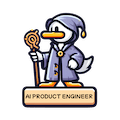🎯 What You'll Learn Today
Graph Basics & State Management
Exercise 1.1 - "Hello LangGraph"
🎓 Table of Contents
📢 Joint Initiative
This tutorial is part of a collaboration between AIPE and Nebius Academy.
⏳ Estimated Time: 30 minutes
📌 Prerequisites
🐍Basic Python knowledge
🧠Familiarity with LLMs concepts
📊Understanding of state management
Objective
Create a simple conversational graph that follows a fixed pattern:
- Start with "Hello!"
- Respond with "How are you?"
- End with "Goodbye!"
Requirements
- State Management:
- Use TypedDict to define a State type with a messages field
- Use Annotated and add_messages for proper message handling
- Node Implementation:
- Create a single LLM node that manages the conversation flow
- Handle the empty initial state case
- Process each message to determine the next response
- Return appropriate state updates
- Graph Structure:
- Initialize a StateGraph with the proper State type
- Add the LLM node and necessary edges
- Implement proper conversation ending condition
- Use START and END appropriately
- Expected Behavior:
- Should support a 3-message conversation
- Must properly terminate after "Goodbye!"
- Should handle the initial empty state
Code
from typing import Annotated, TypedDictfrom langchain_core.messages import BaseMessage
from langgraph.graph import StateGraph
from langgraph.graph.message import add_messagesclass State(TypedDict):
"""
Defines the state structure for our conversation graph.
Attributes:
messages: A list of messages in the conversation.
Uses add_messages as a reducer to combine message lists.
"""
messages: Annotated[list[BaseMessage], add_messages]def llm_node(state: State) -> State:
"""
Processes the current state and returns the next message in the conversation.
Args:
state: Current conversation state containing the message history
Returns:
Updated state with the next message added
The node should:
1. Handle empty initial state
2. Process the last message to determine the next response
3. Return state updates with the new message
"""
# TODO: Implement the conversation logic
passdef should_end(state: State) -> bool:
"""
Determines if the conversation should end.
Args:
state: Current conversation state
Returns:
True if the conversation should end, False otherwise
"""
# TODO: Implement the ending condition
pass# Initialize the graph
graph_builder = StateGraph(State)# Add the node
graph_builder.add_node("llm", llm_node)
# TODO: Add the edges
# Hint: You'll need:
# 1. A starting edge
# 2. Conditional edges to either continue or end the conversation# TODO: Compile the graph
graph = None # Replace with proper compilation# Default input for testing
default_input = {"messages": []}# Make variables available for testing
__all__ = ["default_input", "graph"]

